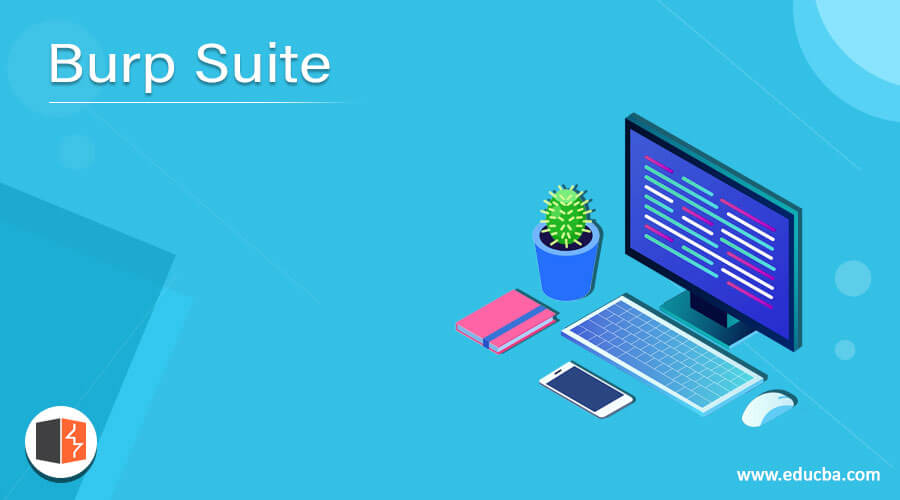Updated April 6, 2023
Introduction to Burp Suite
Burp, also known as Burp Suite, is a collection of tools for web application penetration testing. The Portswigger company creates it. Burp Suite aims to be an all-in-one toolkit, and its features can be increased by installing BApps, i.e. its add-ons. Professional web application security researchers and bug bounty hunters use it the most. It is a better choice than free alternatives such as OWASP ZAP because of its ease of use.
Tools of Burp Suite
Burp Suite offers various tools, which are given as follows:
1. Spider
It’s a web crawler or spider that maps the target web application. The mapping aims to create a list of endpoints that can be examined for functionality and potential vulnerabilities. The spidering is useful because the more endpoints you collect during your recon phase, the more attack surfaces you’ll have during your actual research.
2. Proxy
Burp Suite features an intercepting proxy that helps the user access and change request and response contents while in transit. It also allows the user to submit the under-monitored request/response to another appropriate Burp Suite tool, eliminating the need for copy-paste. The proxy server may be programmed to use a particular loop-back address and port. Unique forms of request-response pairs may be filtered out using the proxy.
3. Intruder
This is used to pass a series of values through a single input point. The values are run, and the success/failure and size of the content are evaluated. Anomalies usually result in a difference in response code or response content length. For payload position, Burp Suite supports brute-force, single values and dictionary files. The intruder is used for the following purposes:
i. Pin forms, Password forms, as well as other forms are vulnerable to brute-force attacks.
ii. The dictionary attack on password types, which are considered to be vulnerable to SQL injection or XSS.
iii. On the web app, rate limiting is being tested and attacked.
4. Repeater
Repeater allows a person to submit requests continuously when making manual changes. It is employed for the following purposes:
i. Checking to see how the user-supplied values are being verified.
ii. How well is it being achieved user-supplied attributes are being verified?
iii. In an input parameter/request header, what values does the server expect?
iv. What happens if the server encounters unpredictable values?
v. Is the server doing input sanitation?
vi. How well the server filter and checks the data provided by the user?
vii. Whose validating system does the server employ?
viii. Which of the cookies on a computer is the session cookie?
ix. How is CSRF security applied, and is it possible to bypass it?
5. Sequencer
The sequencer is an entropy checker that ensures that tokens created by the webserver are random. anti-CSRF and Cookies tokens are examples of these tokens, which are often used for authentication of sensitive operations. These tokens should preferably be generated in a truly random way, with the likelihood of each potential character occurring at each position shared uniformly. This can be accomplished both in terms of bits and characters. An entropy analyzer verifies that this concept is valid. It functions like this: the tokens are considered to be random at first. The tokens are then placed into a series of checks to see whether they follow those requirements. A significant point is a minimum value of probability that a token would exhibit for an attribute, such that if the token’s characteristics probability is less than the significance level, the argument that the token is random is dismissed. This method can be used to identify and count vulnerable tokens.
6. Decoder
URL, HTML, Base64, Hex, and other popular encoding methods are listed in Decoder. This method is useful for searching for datasets in parameter or header values. It’s also used to build payloads for a number of vulnerability types. It’s used to find the most common IDOR and session hijacking events.
7. Extender
External modules can be implemented into Burp Suite to expand the tool suite’s capability. external modules are named as BApps. This function in the same manner as browser extensions do. In the Extender pane, these can be accessed, updated, mounted, and uninstalled. Some of them can be used for the free community version, while others include the paid technical version.
8. Scanner
The group version does not have a scanner. It automatically searches the website for several typical vulnerabilities and lists them, along with details about the level of trust in each discovery and the difficulty of exploitation. It’s revised on a daily basis to include recent and lesser-known flaws.
Conclusion
In this article, we have seen what Burp Suite and its various modules is. I hope you will find this article helpful.
Recommended Articles
This is a guide to Burp Suite. Here we discuss the Burp Suite with its various tools like a spider, proxy, introducer, etc., with an explanation. You may also have a look at the following articles to learn more –



